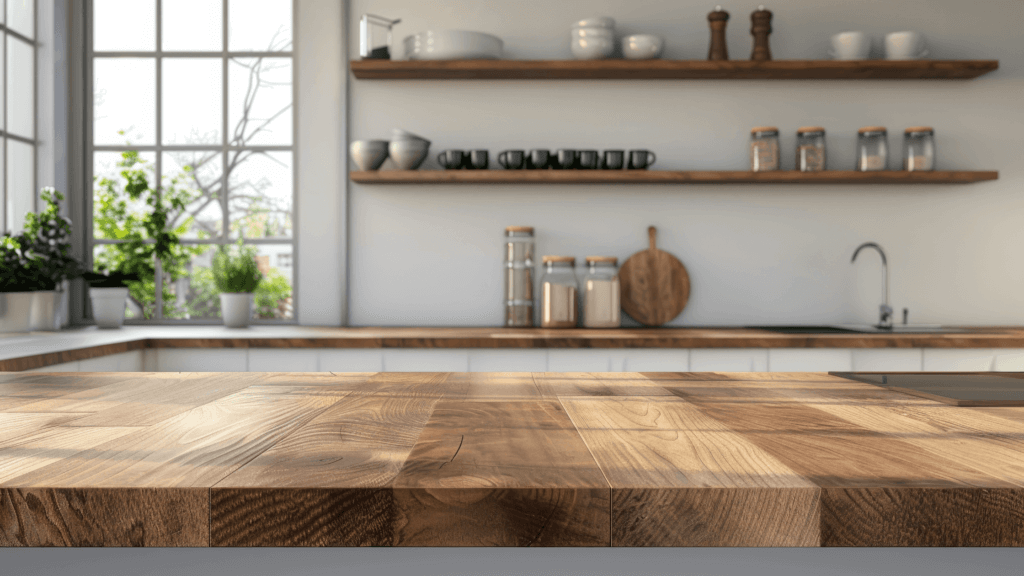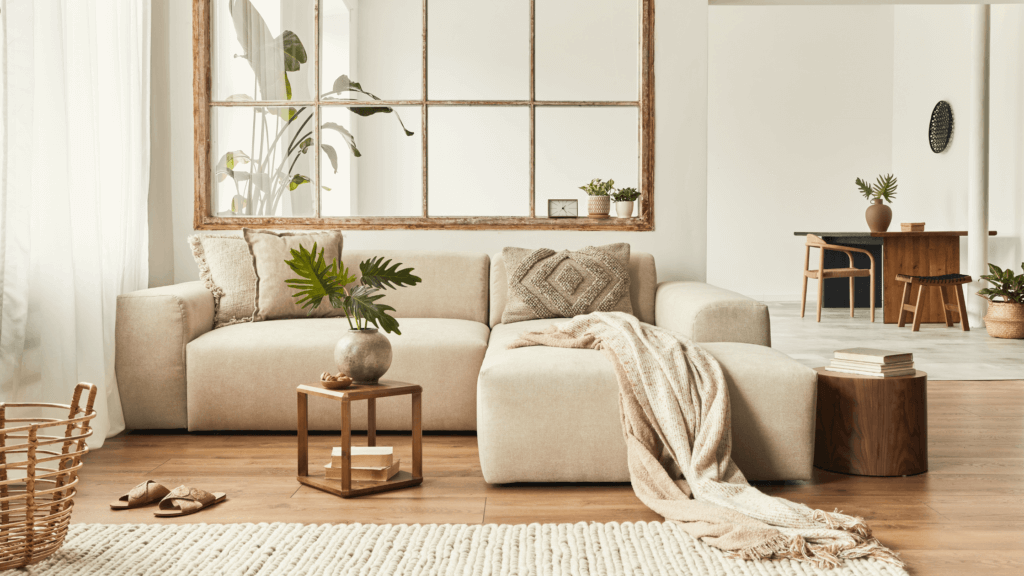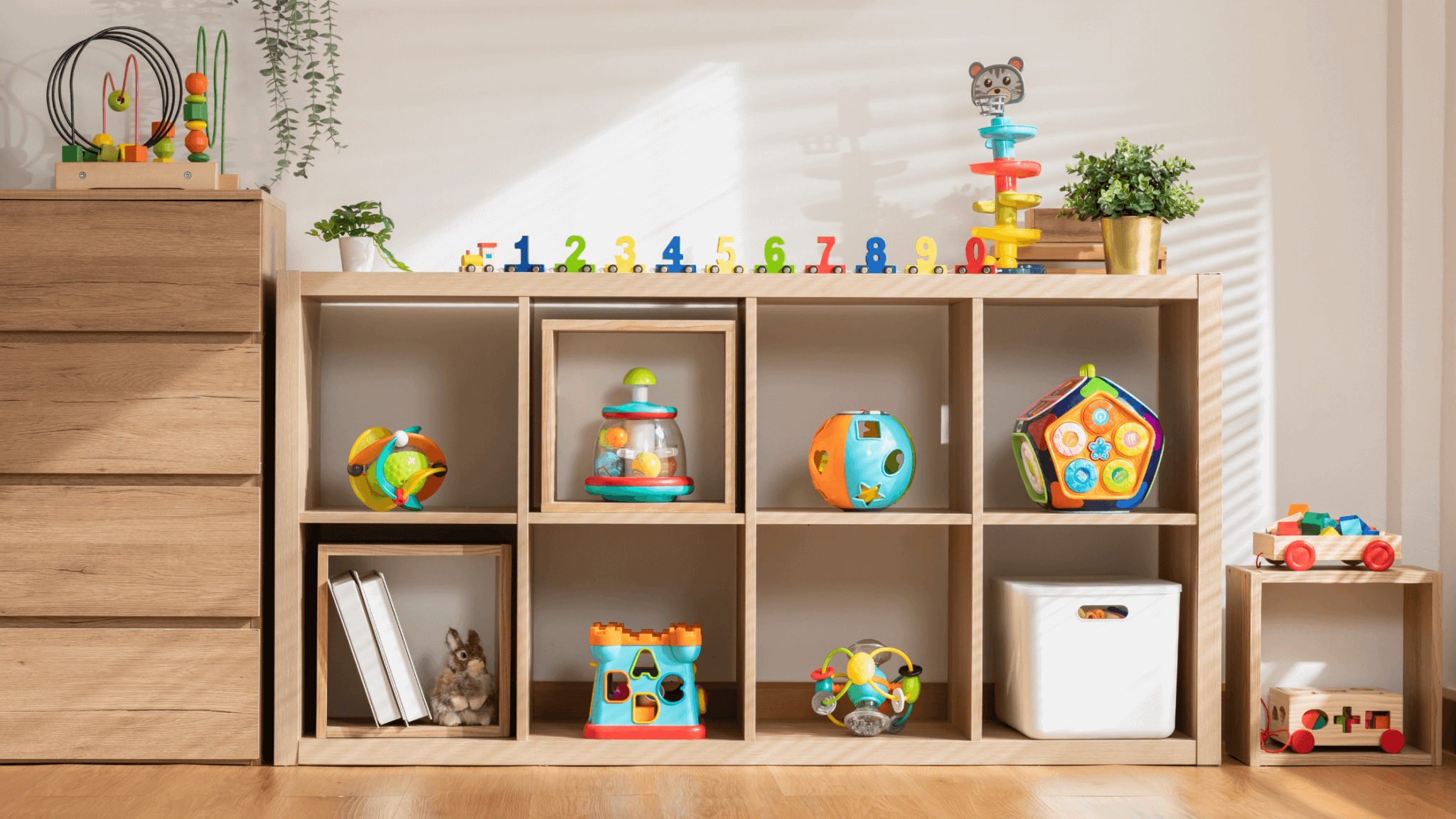When you’ve got little ones at home, striking a balance between curating an inviting space for adults and kids can feel challenging—but it doesn’t have to be. Designing kid-friendly spaces means more than just a colorful space to play in; at the heart of it is functionality, durability, and flexibility. By utilizing interactive walls, an open-concept floor plan, flex spaces, and Jack-and-Jill bathrooms, you can create a functional space and design that works for the whole family.
The top 7 best design features for families
1. Flex space
A flex space is a multi-purpose room that serves whatever purpose you need—your home playroom, gaming room, media room, or crafting room. It has simple furniture that can do it all, like a couch with storage and a simple table. You can choose fun colors but not specifically child-marketed furniture, making your design more timeless.
Why we love it: Flex spaces serve as fun bonus rooms for you and the kids to share in mutual activities without sacrificing space and unappealing decor.
2. Jack-and-Jill bathroom
A Jack-and-Jill bathroom acts as an ensuite for two attached bedrooms. Usually, it has two doors, and the kids can feel like they have their own bathroom space while still sharing the area. It also makes for less mess in the main bathroom.
Why we love it: It’s an excellent place for a tub and shower combo when the kids grow. You could opt for a share-everything design or separate sinks for two kids. Make sure the doors lock on the inside for privacy, especially as the kids become older.
3. Open-concept floor plan
Open-concept floor plans have spacious layouts in the main living spaces of your home. It’s usually an open sightline between the kitchen, dining, and living room, without a hallway or enclosed area separating them.
Why we love it: With an open concept, there are plenty of furniture configurations to ensure your space flows well, and it’s much easier to keep your eyes on the kids from afar without walls blocking the view. It also brings an airy feeling, and fewer corners make the space feel larger and more welcoming.
4. Kid-friendly kitchen

The kitchen is (usually) the heart of the home and where people spend most of their time. A kid-friendly kitchen has unique features designed to make the little ones feel comfortable participating.
Why we love it: Kids love helping in the kitchen, and having them do it safely is ideal. We recommend you avoid leathered finishes, where sticky hands can get ingredients into grooves. Instead, opt for polished finishes, reduce grout lines, and avoid white for easier cleaning. Lower cabinetry and low drawers for snacks also make a great addition to promote independence at a young age.
5. Interactive walls
Like an accent wall, an interactive wall is more kid-friendly and entertaining. It’s a single wall in a room where kids can create and have fun without needing a pack of Magic Erasers.
Why we love it: There are so many options! Lego, chalkboard, sensory, or tactile wallpaper is fun for them to touch, feel, and learn. It gets their creativity flowing and takes their eyes off screens.
6. Teen spaces
Teen spaces are more private spaces that offer teens a secluded space to gain independence and enjoy more privacy alone or with guests.
Why we love it: Finished basements are the perfect option for teen spaces—they allow them to grow and be independent while still being in the comfort of their parents’ homes. To maximize your teen space, give it a full bathroom, easy-to-clean flooring, a wet bar, a sound system, and activities like a pool table or foosball.
7. Low-profile furniture

Low-profile furniture includes regular couches, coffee tables, ottomans, beds, and other items suitable for little legs and arms.
Why we love it: Kids can climb up safer, set their snacks and drinks down easier, and get used to functioning in an accessible way. Choose rounded edges and modular furniture to make the space even more flexible and safe for your little ones.
Tips to optimize your design
Choose appropriate and easy-to-clean floors
There are a few go-to flooring options that are child- and teen-friendly. Hardwood and engineered hardwood are excellent choices for older kids and teens, as they’re easy to clean and relatively durable. Laminate is a cheaper option that’s also quite sturdy.
You could also choose vinyl plank flooring, which gives your home a wood look without the cost of natural wood. The last easy option is carpet tile, which is easy to install and comfortable for kids.
Make stairs safer with a stair runner
Adding a runner to your stairs makes slippery flooring easier to grip and reduces the likelihood of slips and falls. It also muffles the sound in the stairway, promoting a more peaceful environment. As a bonus, you can find many washable stair runners for easy cleaning.
Pro tip: You can also invest in stair carpet treads—they’re peel-and-stick pieces of carpet that function like a runner but at a fraction of the price.
Use concealed storage
Concealed storage is handy and a great way to keep kids’ clutter out of the way. You can use space under stairs for additional storage, find coffee tables with storage, build some cubbies in your foyer, or even go for couches with built-in storage.
Washable wallpaper or semigloss paint
Every parent hopes to avoid drawing on the walls, but it inevitably happens. Washable wallpaper allows you to choose a fun design and erase any mistakes. It’s also relatively easy to remove and safe on paint.
If you do go with a paint option, opt for semigloss paint. It’s washable, stain-resistant, and more durable.
